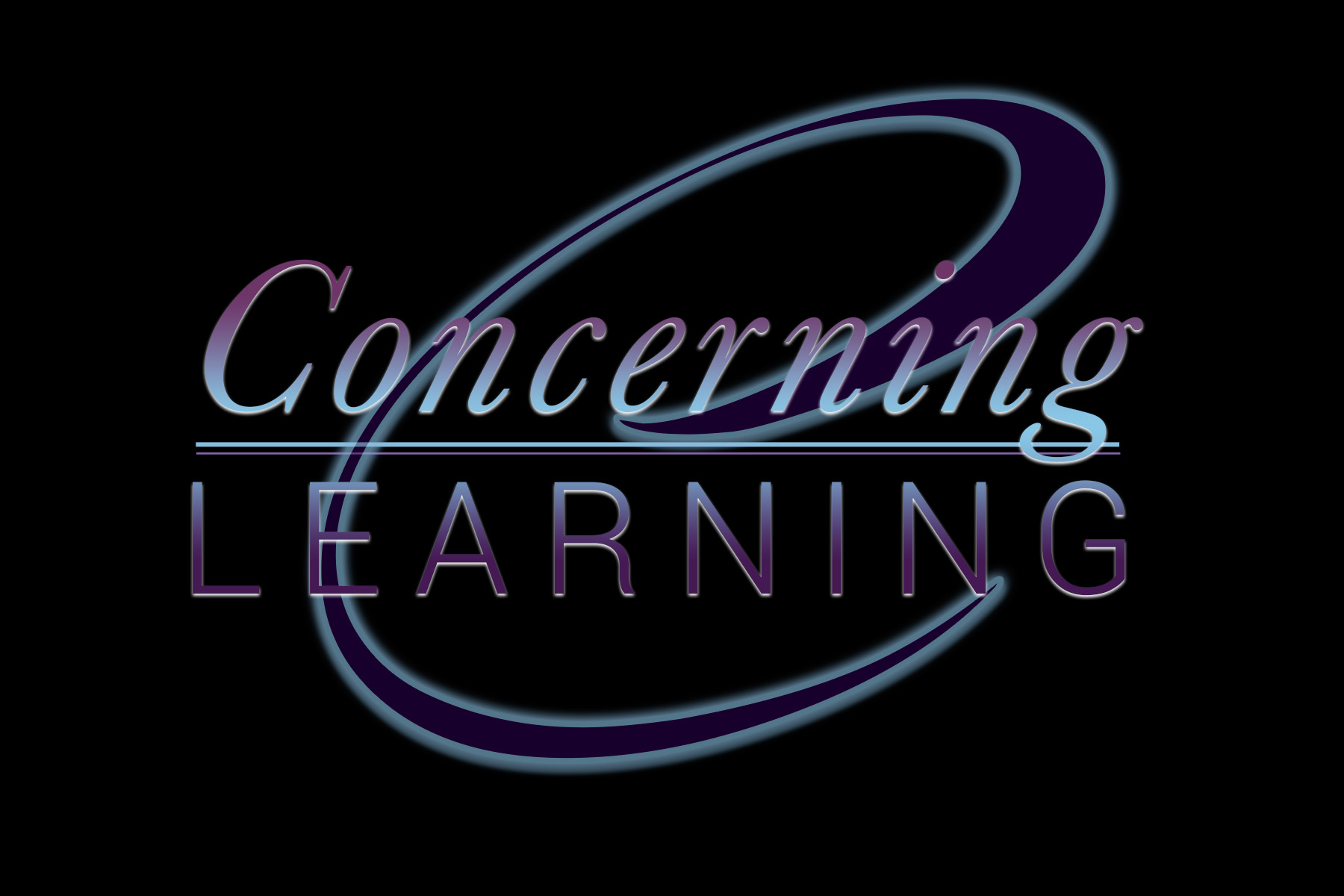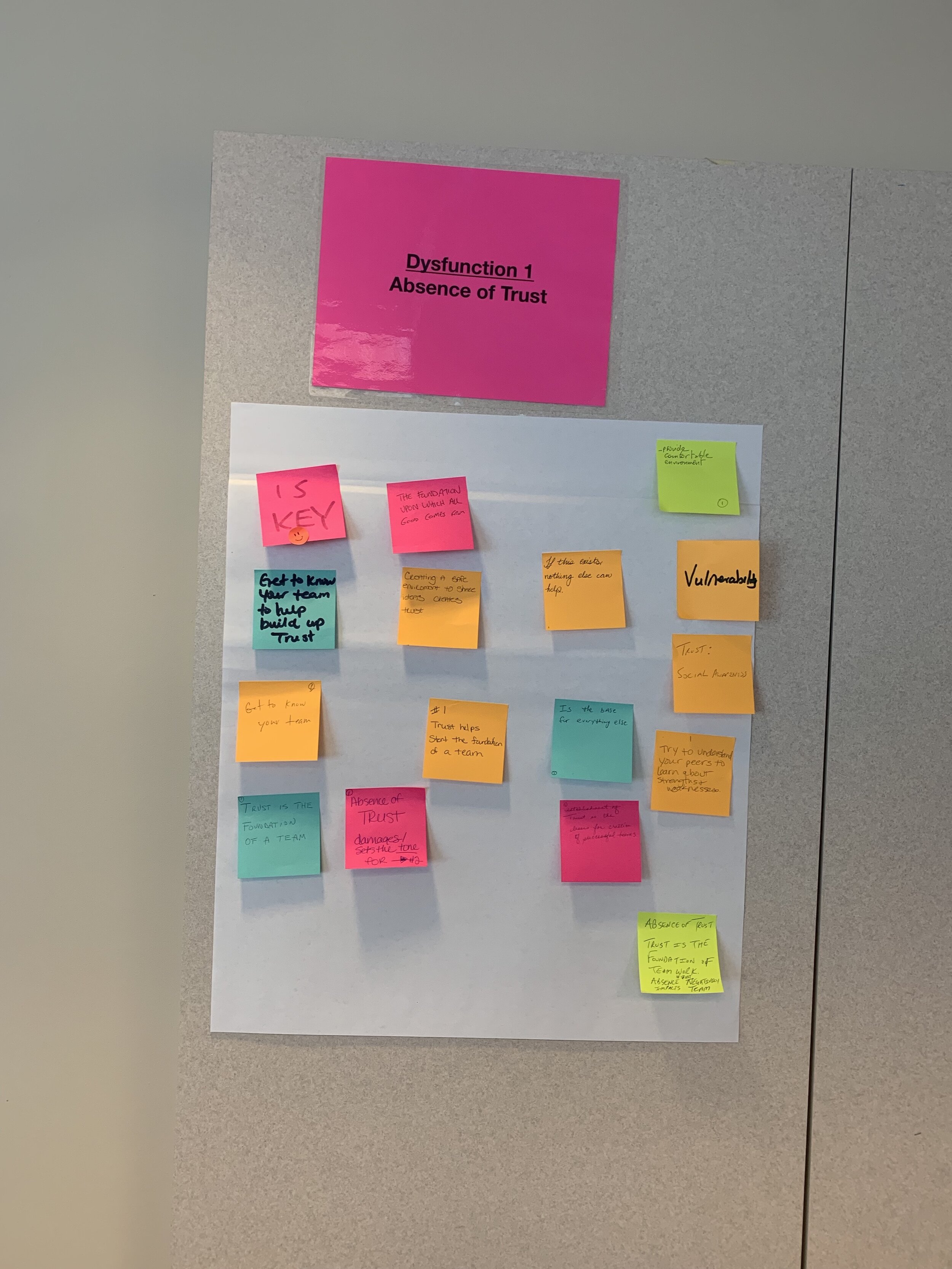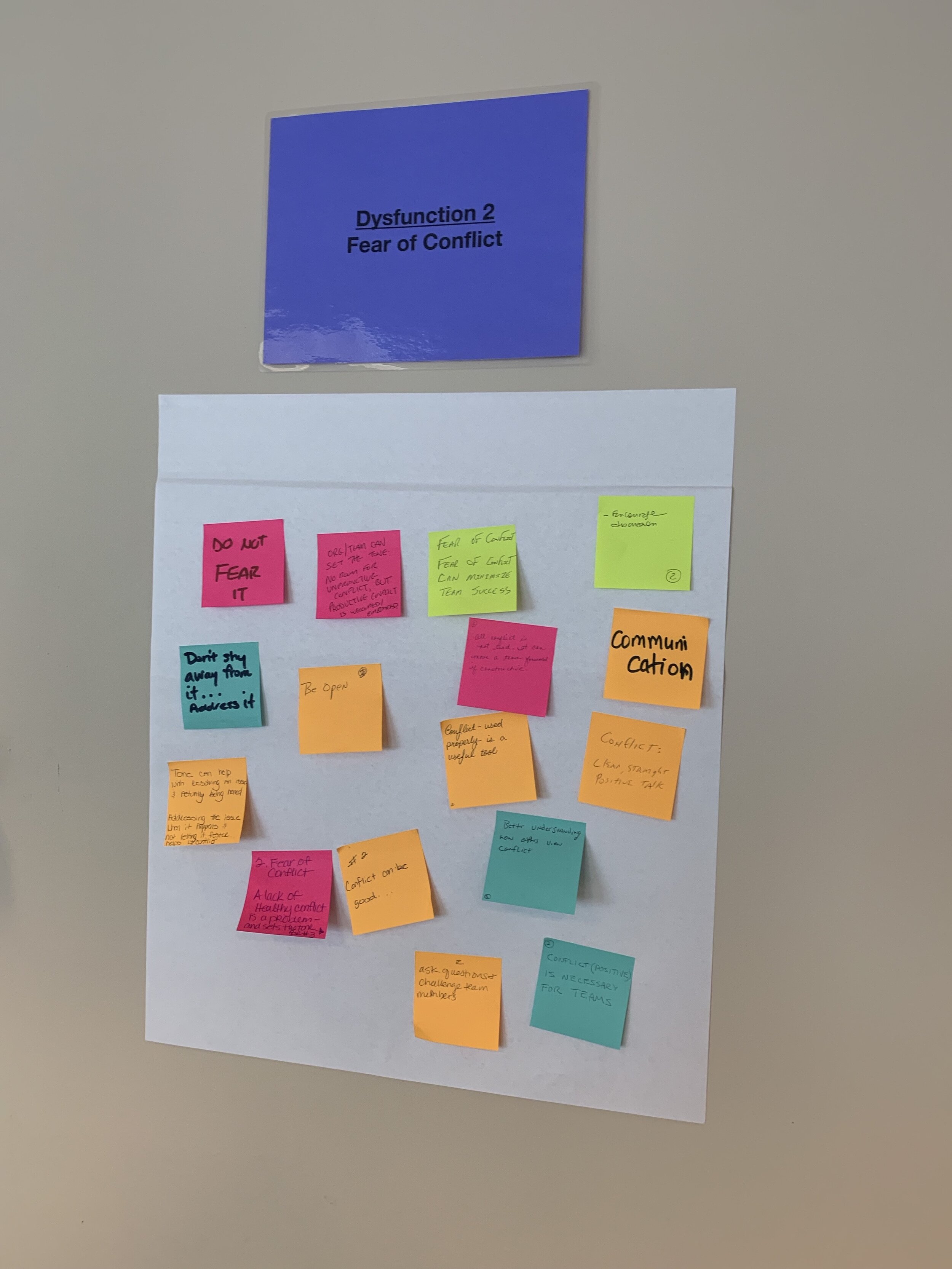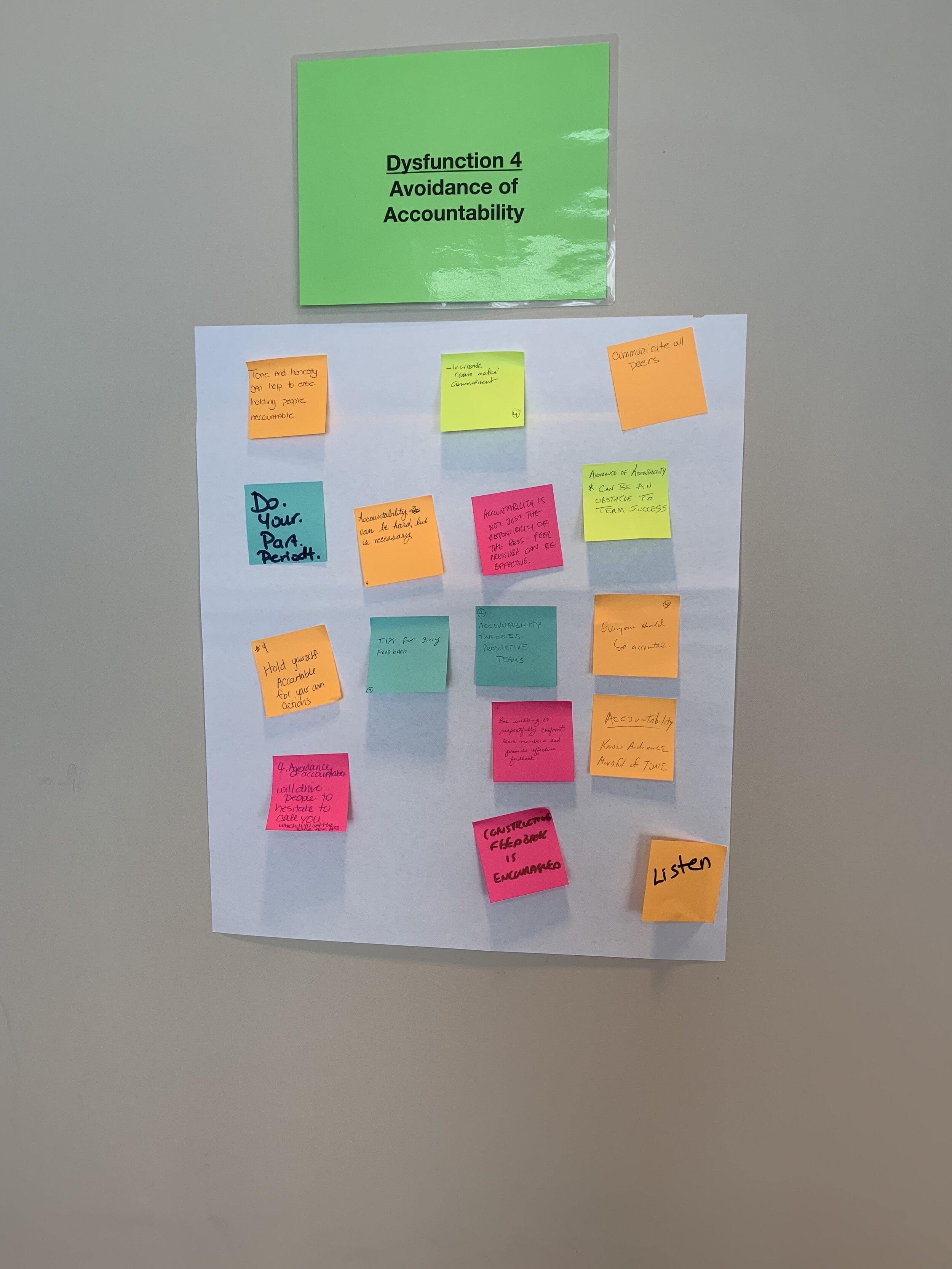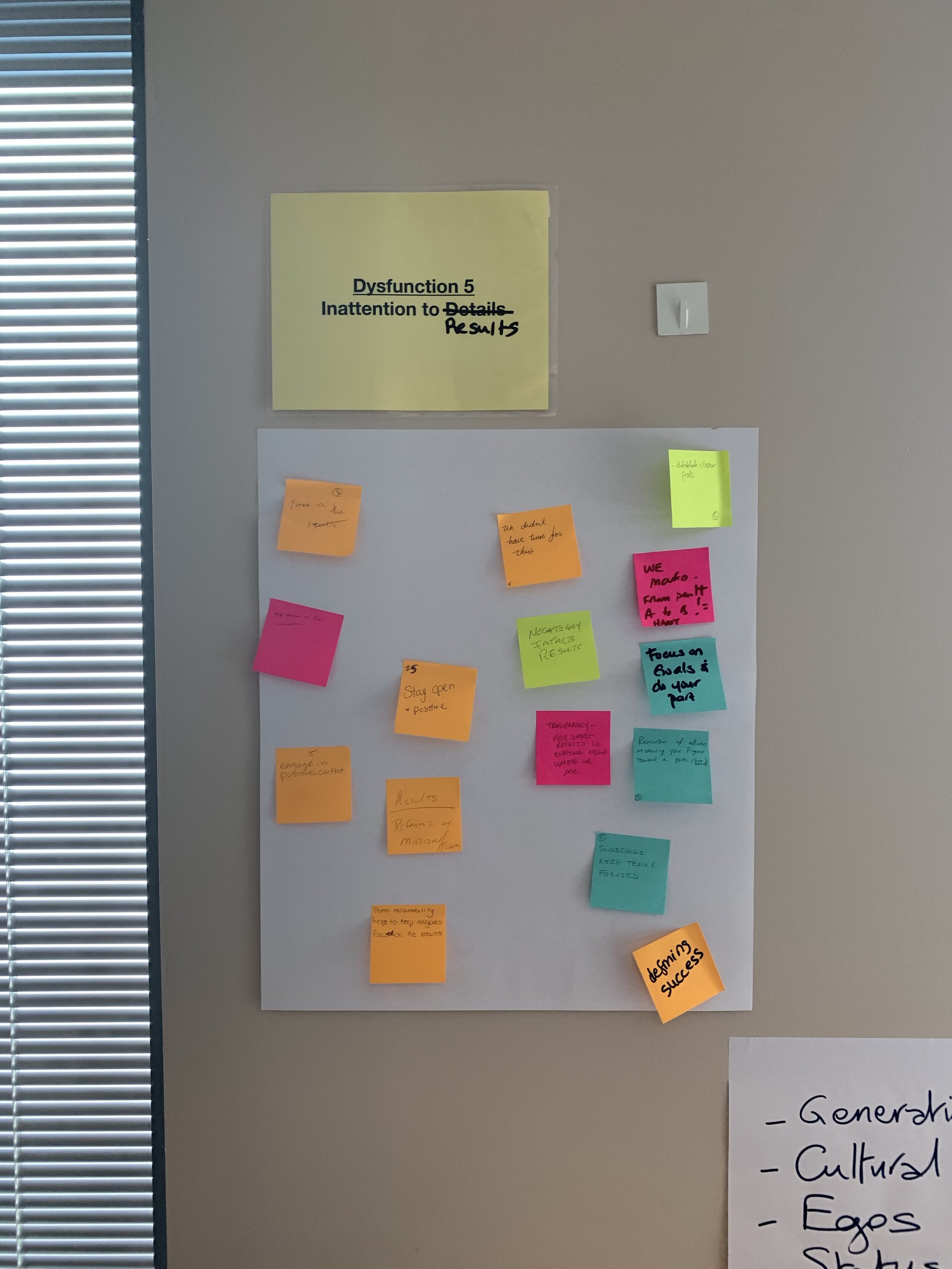Overcoming Team Dysfunctions to Improve Cohesion for Higher Results
Employee development is one of the “right programs” that organizations need for an Extraordinary Learning Strategy. It’s amazing how quickly teams can improve cohesion in just two 1/2 -day sessions! I tremendously enjoyed delivering The Five Dysfunctions of a Team Workshop for Employees for a federal government agency. It was truly an extraordinary learning experience that I feel everyone deserves when they take valuable time from their busy days to attend training.
The Problem: How do we improve our team cohesion?
Many organizations are struggling with improving team cohesion. Team-building is an essential employee development skill due to factors such as constant change, fractured relationships and siloed thinking cause teams to not perform at optimal levels. I can’t think of an organization that does not experience some form of dysfunction. No organization is exempt! High-performing organizations today can quickly turn into uproductive, ineffective, and inefficient ones if they are not courageous and disciplined to combat The Five Dysfunctions of a Team that, Patrick Lencioni explains in his best-seller book.
When teams are experiencing challenges, leaders often seek team-building training as the solution for the lack of team cohesion. It’s important that the workplace learning professional manages expectations and clearly communicates to the leaders what team-building training can and cannot solve.
The Solution: Provide a framework to overcome five common team dysfunctions
During the one-day Five Dysfunctions of a Team for Employees Workshop, which was delivered in two, half-day sessions to accommodate the participants’ busy schedules, employees learned The Five Dysfunctions of a Team model and strategies to overcome the dysfunctions. I designed customized activities based on their organizational-specific needs and tailored them to their critical mission.
I was able to guide them in understanding the concept of teams that trust one another, engage in conflict, commit to decisions, and hold one another accountable are very likely to set aside their individual needs and agendas and focus almost exclusively on the collective results that define team success.
The Results: Employees feel empowered and inspired to be an awesome team member
The results were immediate! After the first ½-day session, two team members actually applied what they learned about overcoming the absence of trust and fear of conflict in real-world challenges that they faced before the beginning of the second day. Both team members attributed what they learned in the workshop to their success in addressing the challenge.
At the conclusion of the workshop, each team member left with tools to engage in build vulnerability-based trust, passionate dialogue, clarify goals, and hold each other accountable. To encourage the learning transfer process and continue the learning journey, I gave them a “Caught Being an Awesome Team Member” card to acknowledge those team members who apply key concepts and techniques. Not only does this card help them to remember the model but keeps them inspired and focused on what it takes to improve team cohesion.
I’m looking forward to future sessions where I’ll train the rest of the employees and leaders as well as facilitate an additional team-building activity that provides experiential practice, in a safe environment, to become an extraordinary and cohesive team that achieves higher results!
